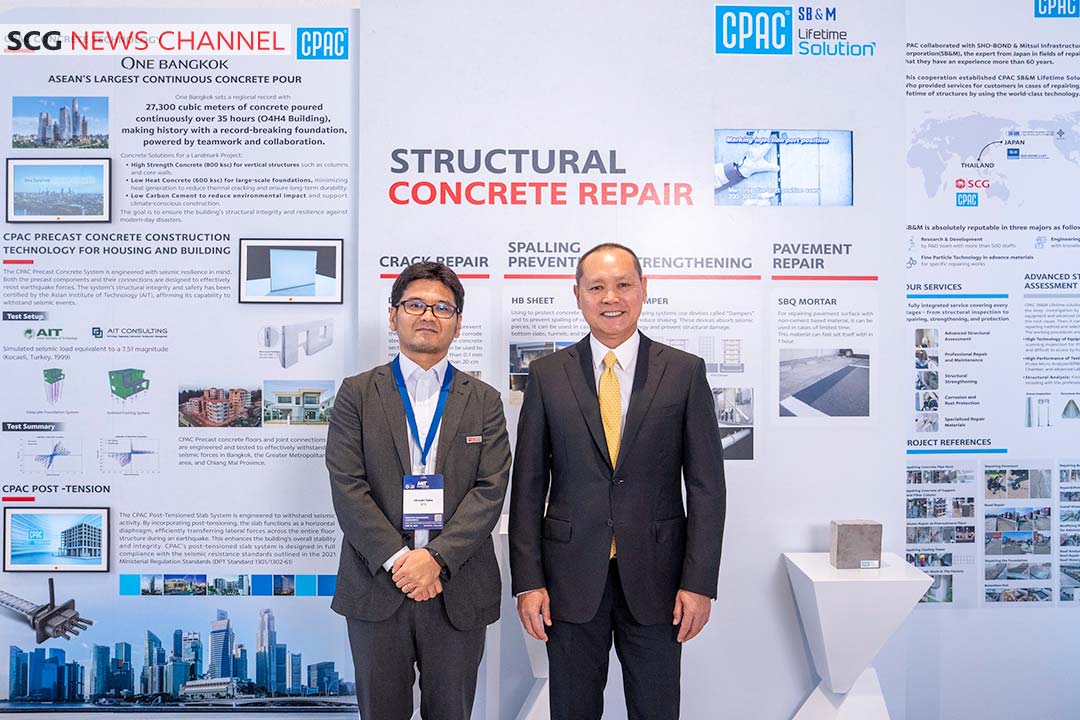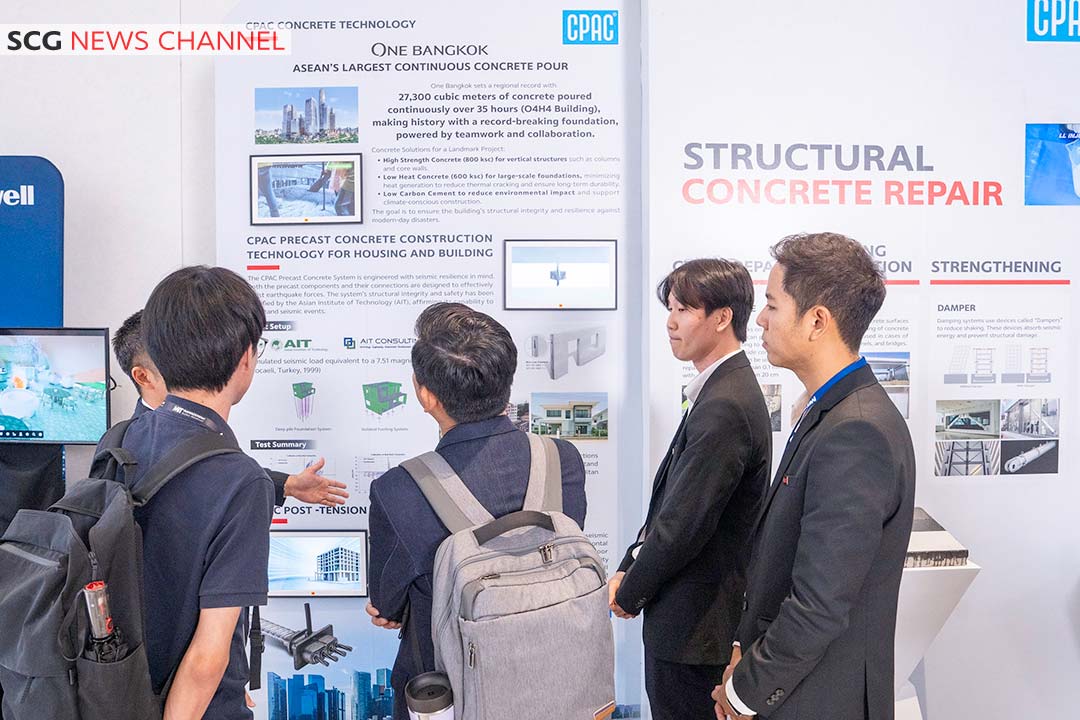SCG, led by Mr. Paramate Nisagornsen, Vice President-Corporate Administration, SCG, participated in a panel discussion at the “MIT Disaster Management Conference: Building a More Resilient ASEAN through Technology, Innovation and Design” at One Bangkok Forum. The company shared perspectives during the Industry Discussion segment titled “Building for a More Resilient Future,” presenting the collaborative work between One Bangkok and SCG in driving businesses prepared to handle natural disasters while maintaining environmental sustainability. The partnership emphasizes carbon reduction through efficient energy and resource utilization, elevating national structural engineering standards through technology applications for various construction projects and serving as a model for development projects in Thailand that prioritize long-term safety and sustainability standards. The discussion also highlighted the importance of disaster management processes both before and after incidents, including risk management to ensure organizations remain prepared for emergency situations and can maintain business continuity.
The event featured an exhibition booth showcasing high-strength concrete innovations, CPAC, and repair and reinforcement technologies from CPAC SB&M Lifetime Solution through partnership with Japanese allies Shobond & Mitsui Infrastructure Maintenance Corporation (SB&M), specialists in deep repair with over 60 years of experience in technology, materials science, and specialized repair innovation development for ASEAN regional environments. This demonstrates leadership capabilities in concrete technology and readiness to provide comprehensive repair and maintenance solution services for structures that address disaster-related challenges.

Additional Information
Structural Repair and Reinforcement Material Innovations from CPAC SB&M Lifetime Solution
Low Pressure Injection technology repairs small cracks on concrete surfaces to prevent moisture penetration that could damage internal reinforcement steel through corrosion, leading to progressively severe damage until structures lose their load-bearing capacity, potentially causing serious harm to life and property.
HB Sheet technology applies to concrete structure surfaces to prevent falling concrete debris deteriorated by moisture and chemicals that could endanger life and property. This solution suits bridges, tunnels, underpasses, beam undersides, and floor undersides.
SBQ Mortar addresses crack repairs through major damage on road surfaces and roadway projects. This high-performance material offers convenience, ease of use, minimal working time, and rapid operational readiness.
Damping System represents advanced reinforcement innovation technology from Japan, utilizing equipment called “Dampers” to reduce vibration forces, helping prevent structural building damage.
High-Performance Concrete Technology
CPAC High Strength Concrete innovation provides concrete with high compressive strength for high-rise building structural work. Research and development have created enhanced durability capable of supporting large structural loads with smooth, consistent concrete texture. CPAC Low Heat Concrete offers special formula low-heat concrete supporting compressive strength up to 600 ksc for large foundation work, ensuring building structural quality can bear designed loads and resist various current disasters effectively.
CPAC’s Precast Concrete System represents construction technology for residential and building applications. The CPAC Precast Concrete System develops and designs precast structural joint systems capable of earthquake resistance, certified by AIT Institute as able to withstand earthquake forces safely and securely. CPAC’s leak prevention system employs a Double Protection system using two-layer joint sealing materials for Wet Joint systems, suitable for residential work where wall panels embed Wireloop or Galvanized Steel connection materials designed and manufactured to European standards with anti-corrosion properties, reducing crack damage from prying or pulling equipment while providing convenient and rapid on-site installation. Subsequently, CPAC Non-Shrink Grout and CPAC Epoxhesive provide sequential coverage. Dry Joint systems for building work feature thin design at panel ends, with panel sides sealed using Backing Rod and covered with CPAC Modified Silicone. SCG precast concrete floors and joints undergo design and testing to effectively withstand earthquake forces in Bangkok metropolitan areas and Chiang Mai province.
CPAC’s Post-Tension System technology for floor construction can withstand earthquake vibrations because post-tension flooring creates horizontal diaphragm plates that help distribute external lateral forces throughout the building’s floor plates. CPAC designs post-tension floors to resist earthquake vibrations according to 2021 Ministerial Regulation standards or MYP.1301/1302-61. Post-Tension floors can reduce building height since beam elimination allows each floor height reduction of 30-60 centimeters. Therefore, buildings using Post-Tension floors provide more floors and usable space, yielding higher land investment returns, particularly for buildings constructed in height-restricted areas. Structural benefits result from floor plates remaining under constant compression forces, providing excellent crack resistance. In overload cases, floors may develop cracks, but crack reduction occurs when overload removal happens. Post-Tension floors can withstand earthquake vibrations better than conventional floors because Post-Tension flooring creates horizontal Diaphragm plates that help distribute external lateral forces throughout the building’s floor plates.

Published on: Jul 2, 2025